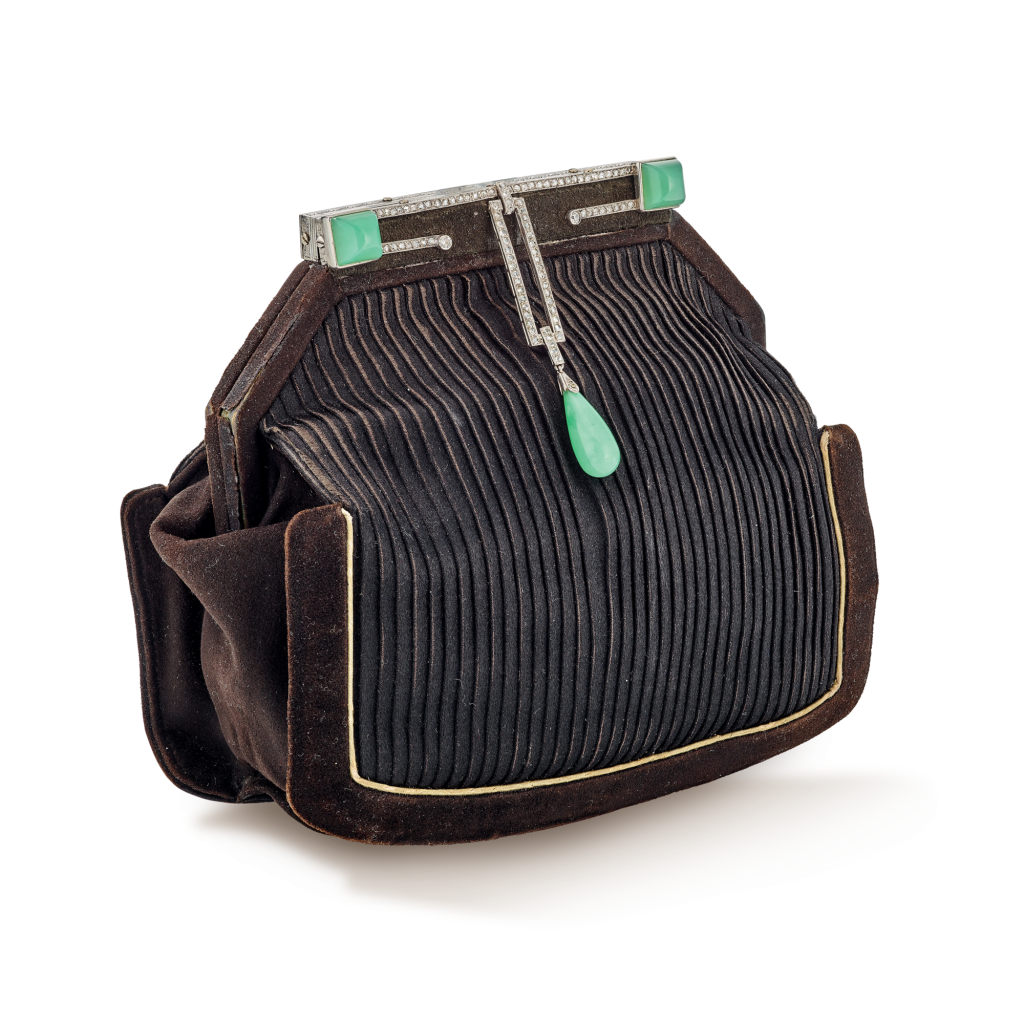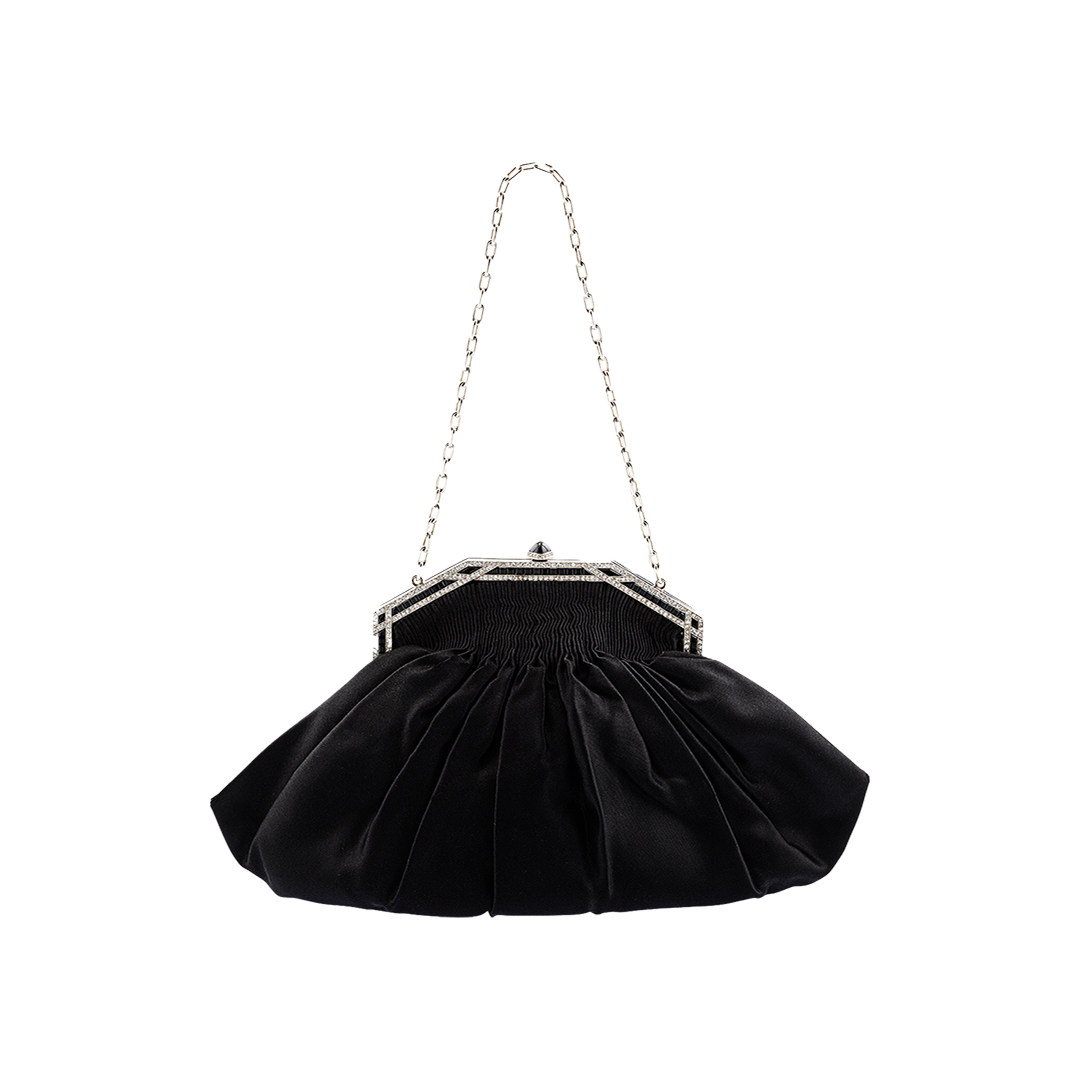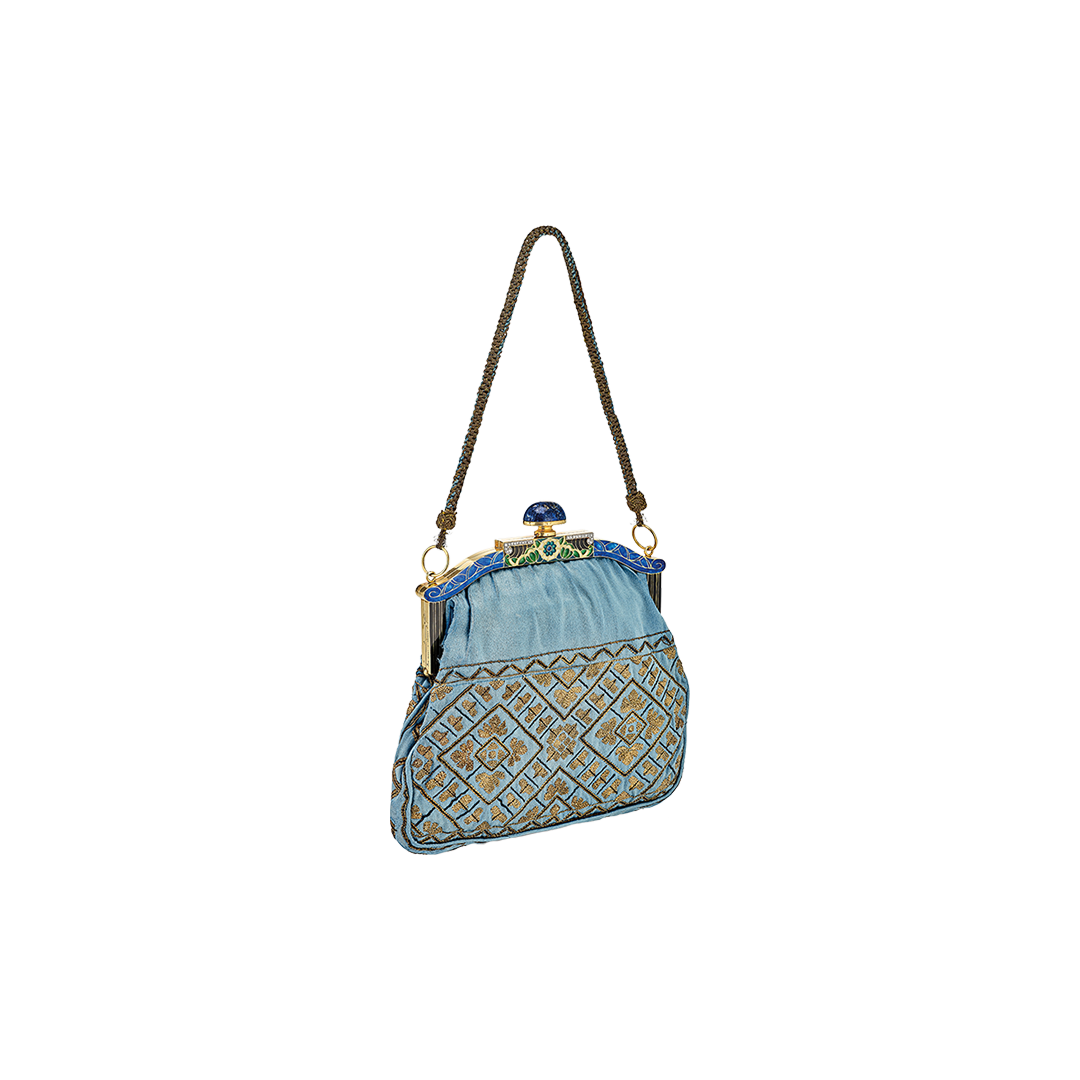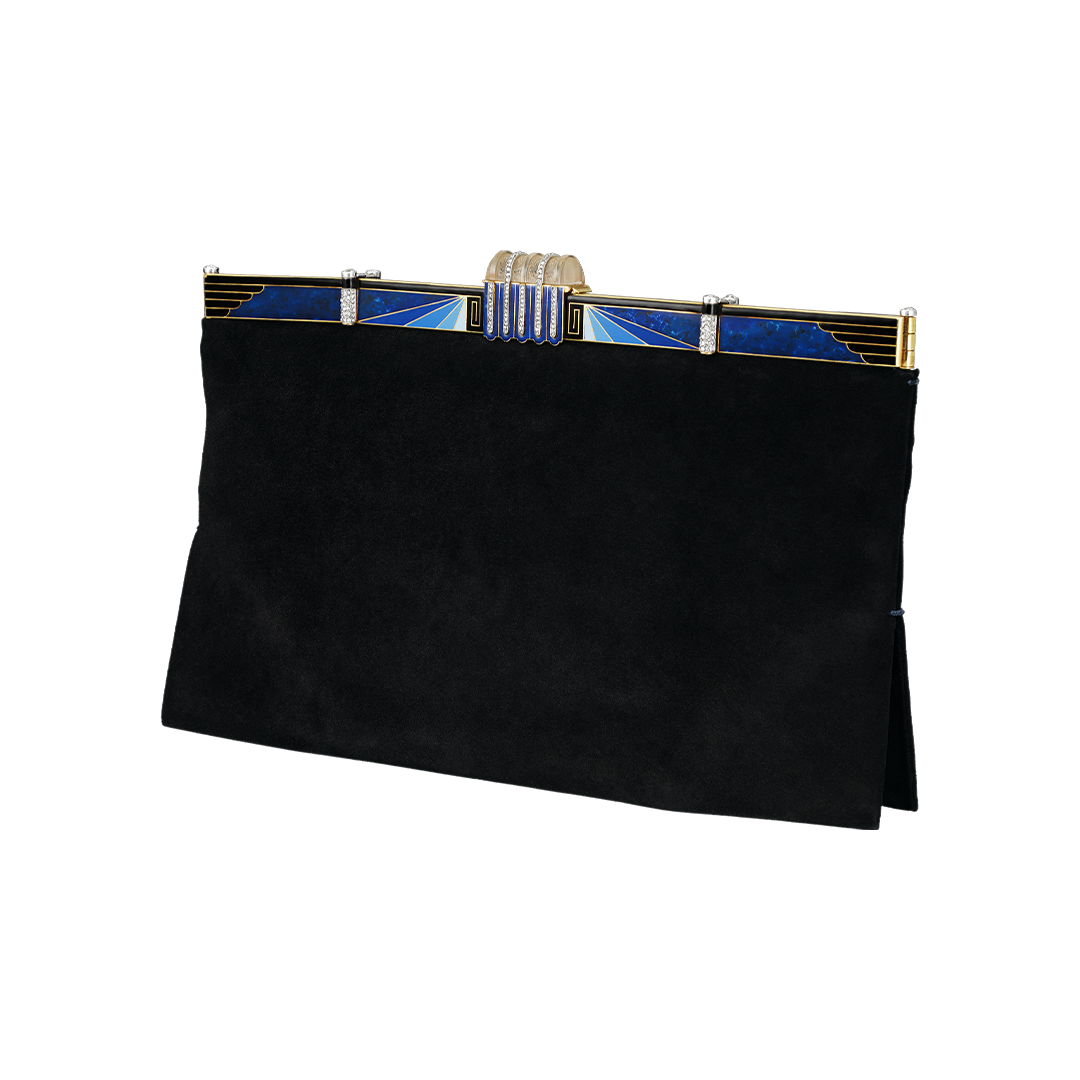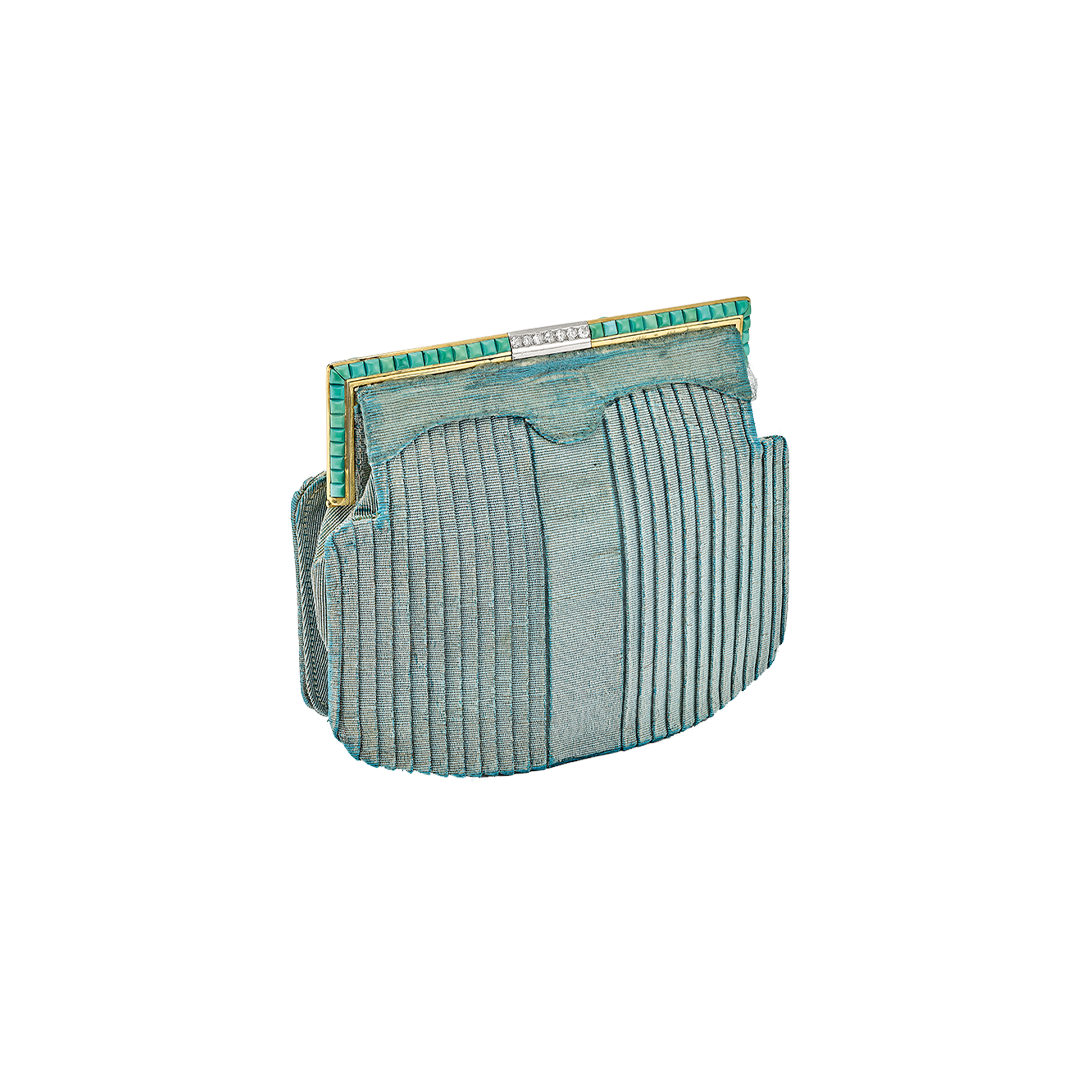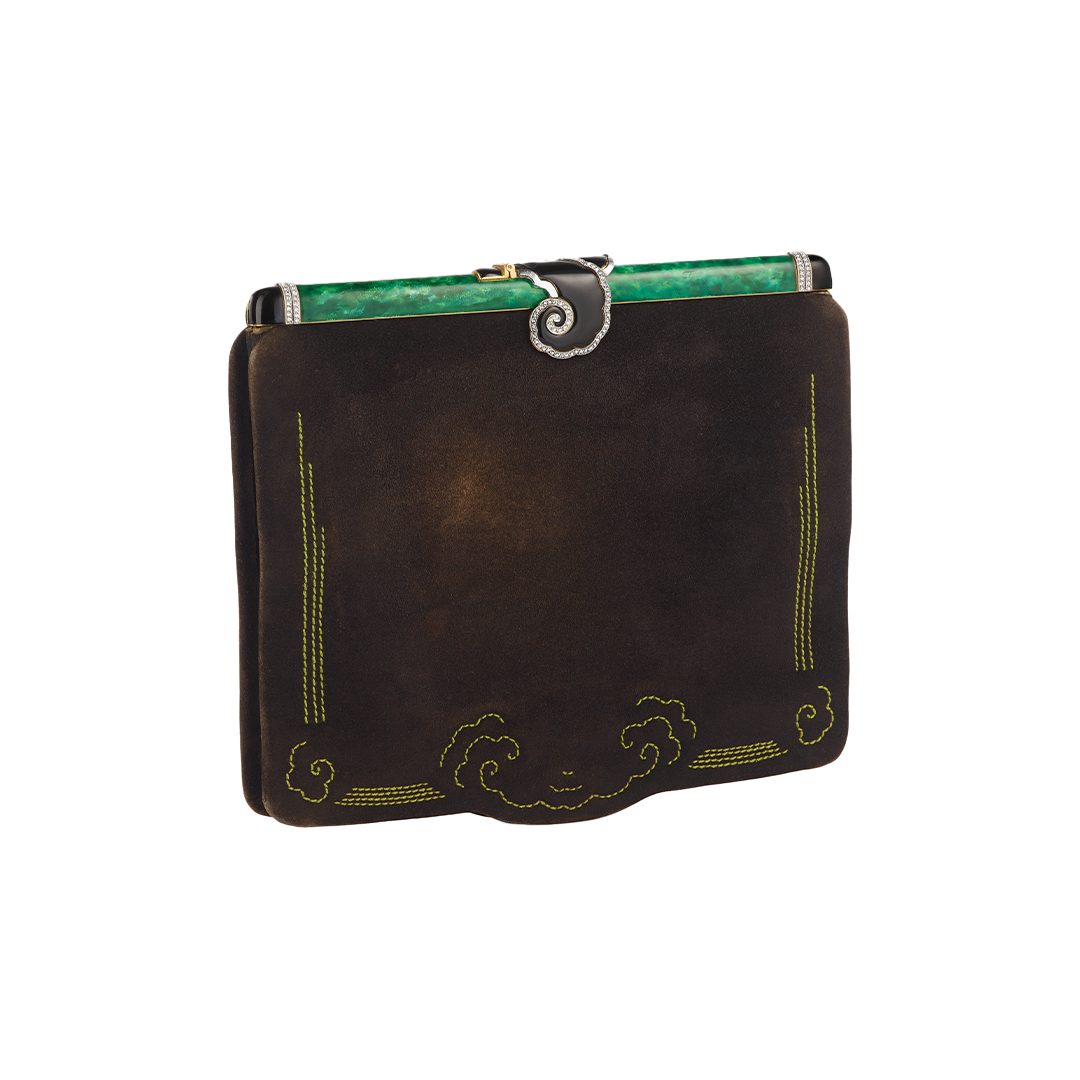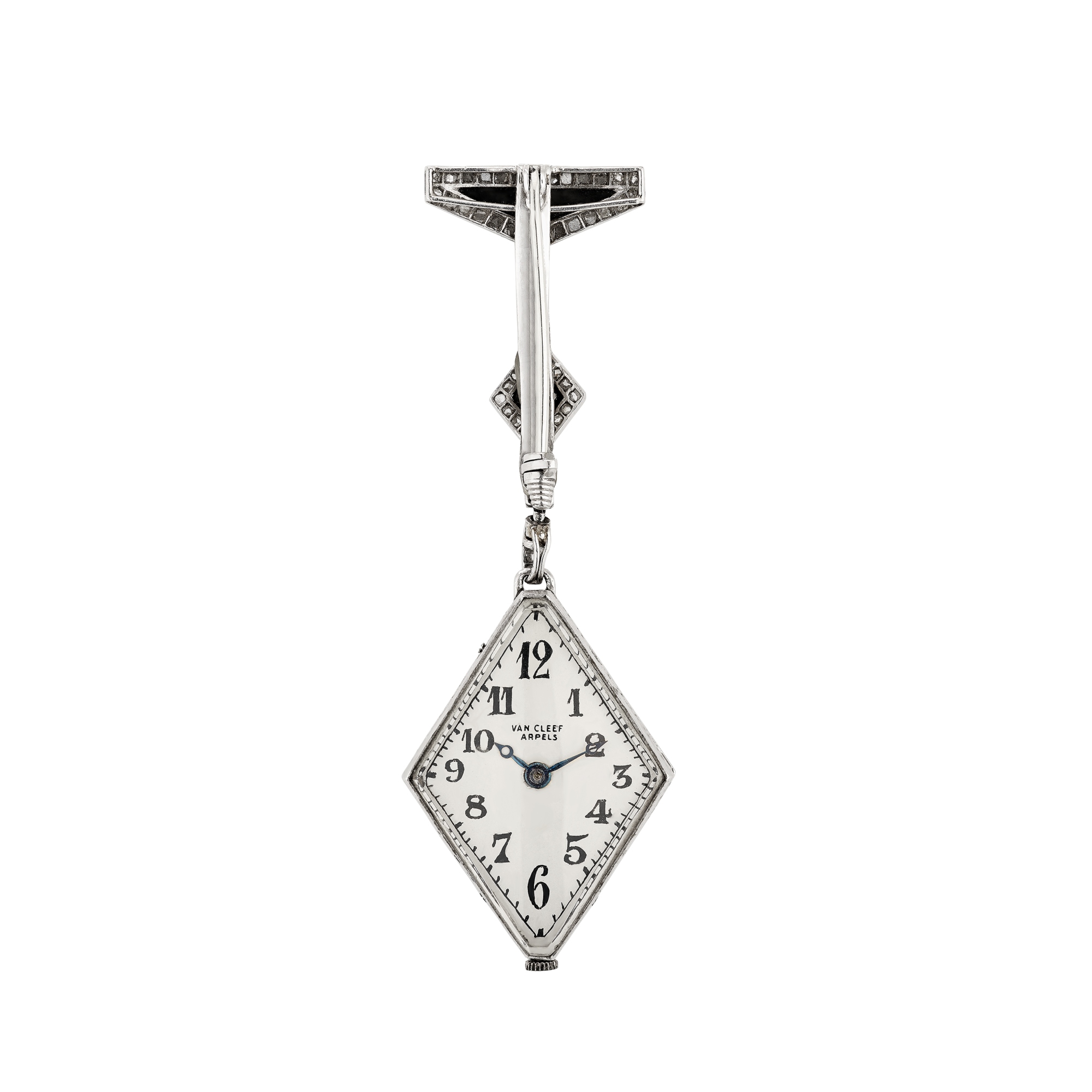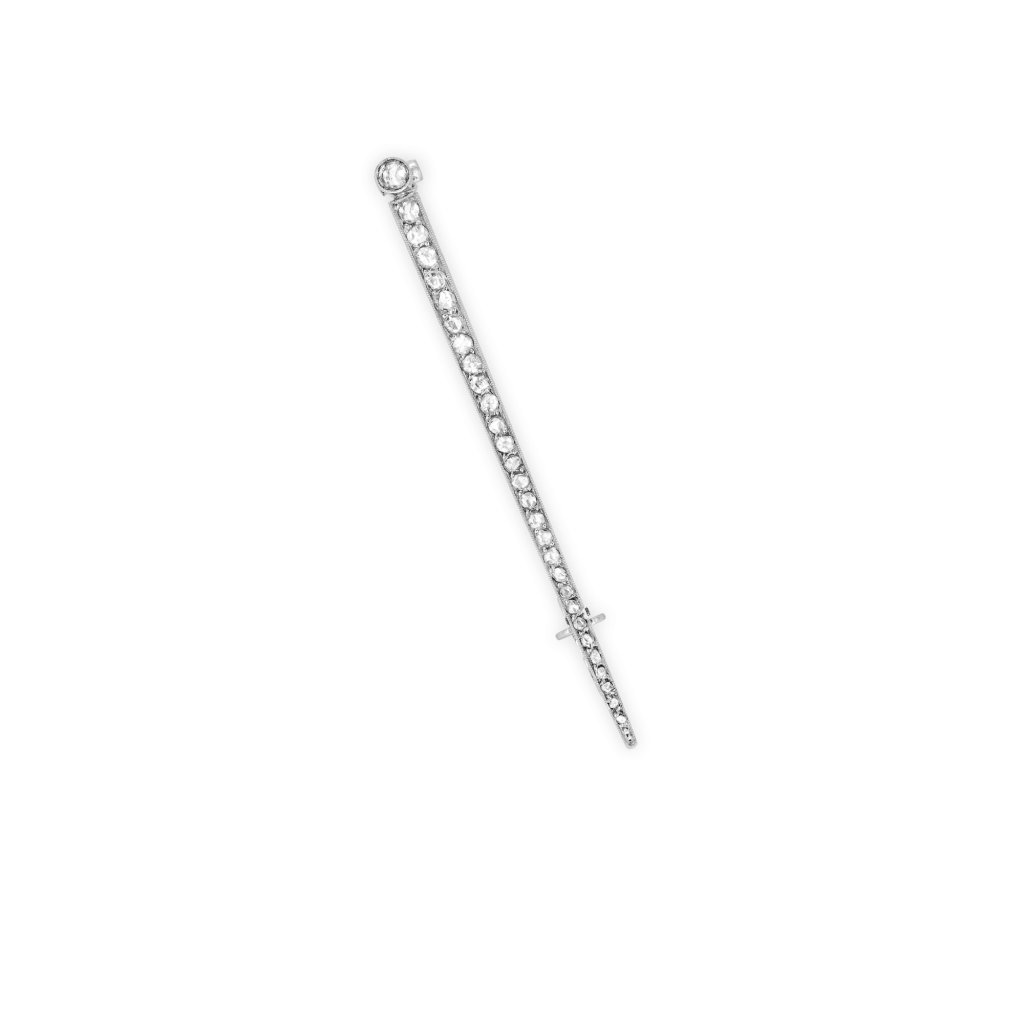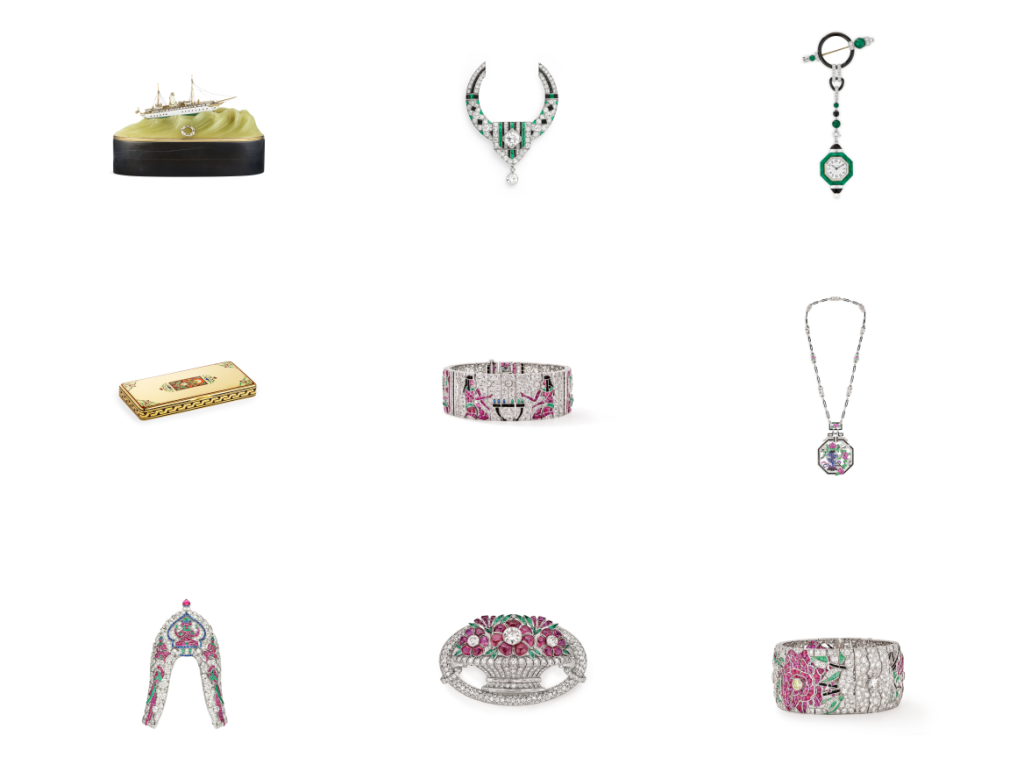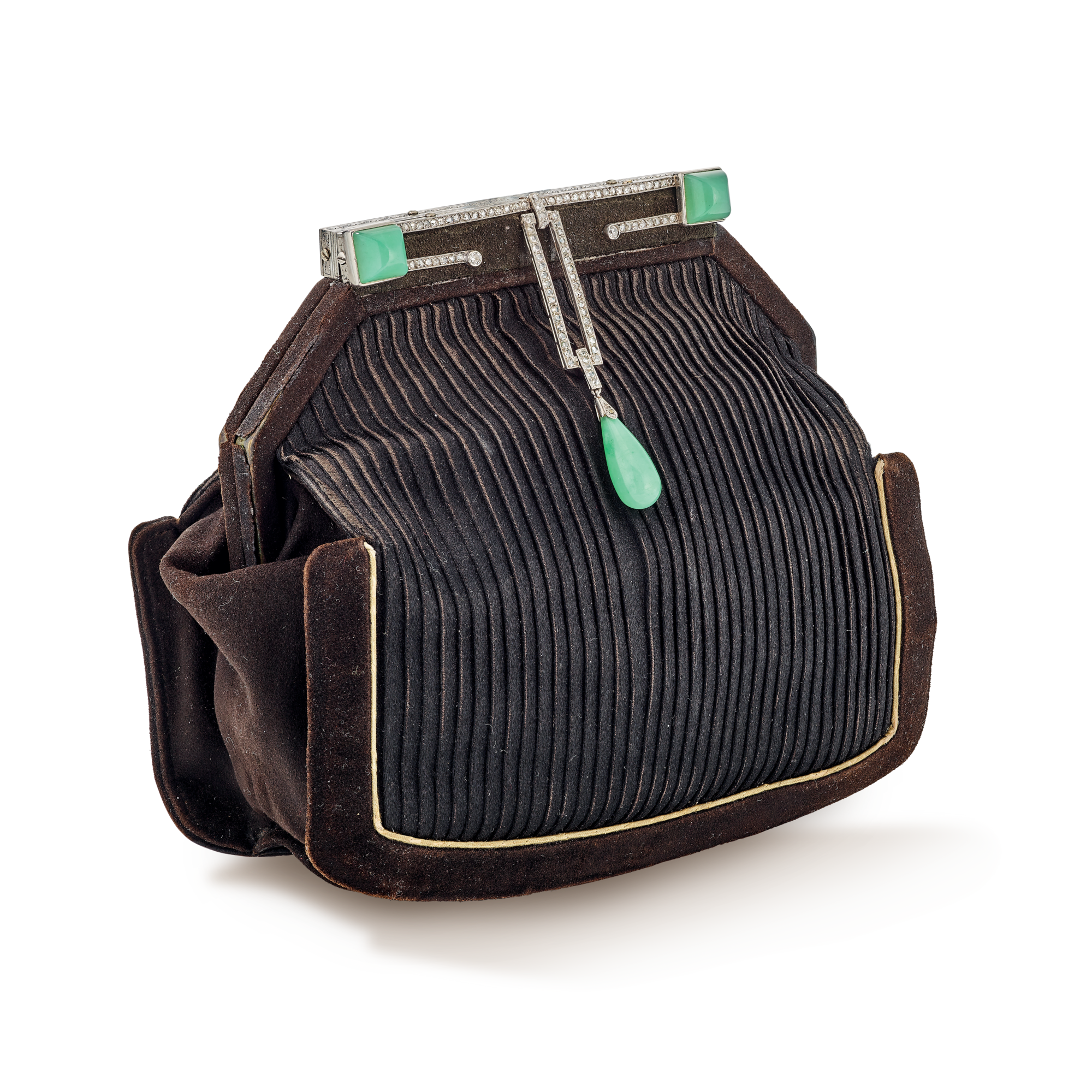
Purse
Creation details
- Creation year 1920
- Usage Other
- Dimensions 140 × 140 mm
This evening purse combines both the jewelry arts and textiles, clearly illustrating the relationship that existed between various professional bodies at the dawn of the 1920s.
The jewelry element adorns the clasp of this small, black silk, gold-trimmed purse and consists of a row of platinum set with rose-cut diamonds along the purse’s upper edge, with a jade cabochon at each end highlighting the right angles. From there, the line of diamonds doubles back towards the center, each side ending in a brilliant-cut diamond. In the middle of this perfectly symmetrical composition is a quadrangular-shaped link of platinum and diamonds with a jade drop suspended from it.
A jewelry clasp
Irrespective of its graphic beauty, this clasp was praised by the press of the period for its use of such a precious ornament on an ordinary fashion accessory: “The purse, a delicate accompaniment to a woman’s outfit, has scarcely changed since the Empire […] In an exceptional move, [the jewelry makers at Van Cleef & Arpels] have stepped outside the usual boundaries of their profession to launch pretty purses [that] are both pieces of jewelry and hitherto unseen works of art.”1Anonymous, “Étrennes utiles,” Liberté (December 28, 1920): n.p.
The union of savoir-faire
This association between jewelry makers and leather and textile makers was not unique to Van Cleef & Arpels in the early 1920s. The production of a purse always involves a wide range of professions including embroiderers, weavers, écaillistes (tortoiseshell craftsmen) and feather workers, and, from the beginning of the century, the services of numerous jewelers were required to make their metal frames.
The 1921 bag
In the case of Van Cleef & Arpels, the initial success encountered with the “1921 purse,”2Created in December 1920, this purse was commercialized in 1921. led to a new line of products, heralding major innovations such as the Minaudière.
Minaudière
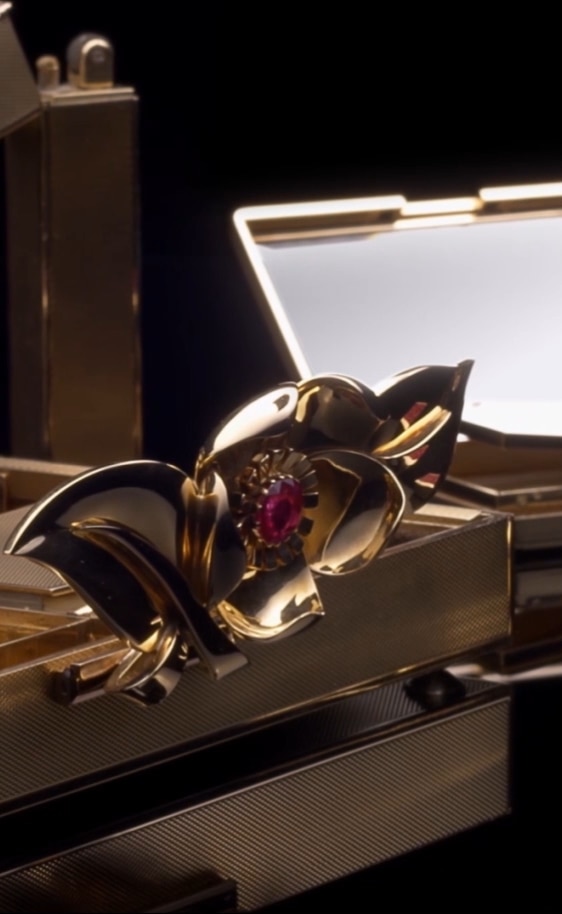
To go deeper
